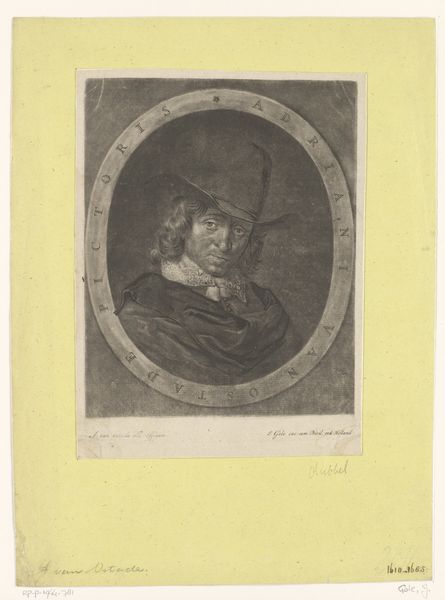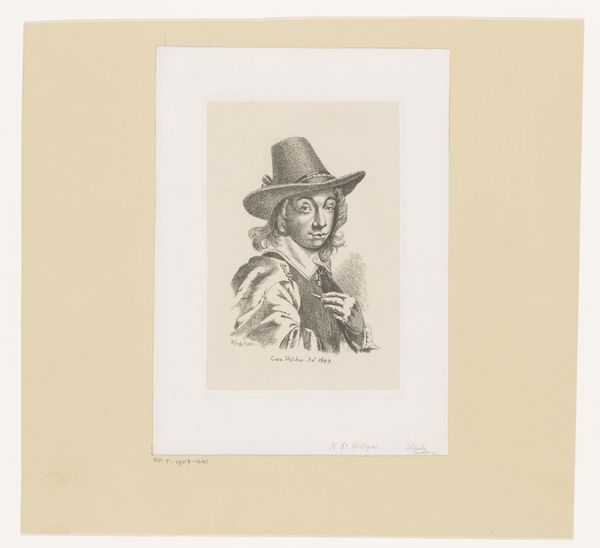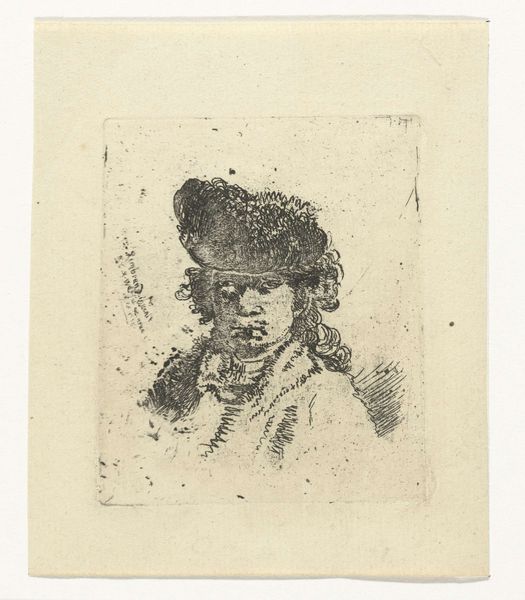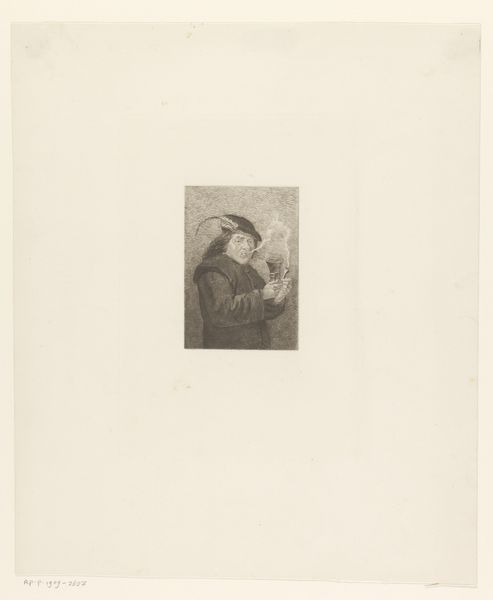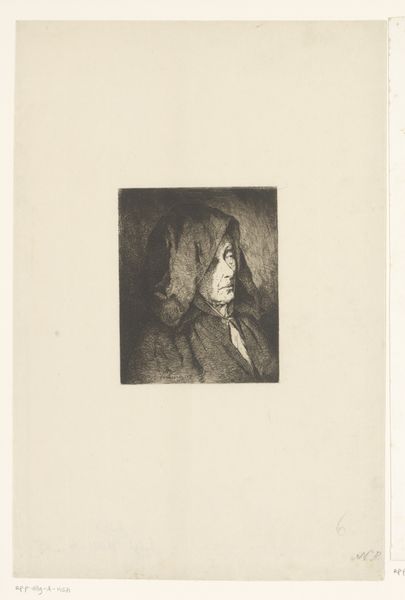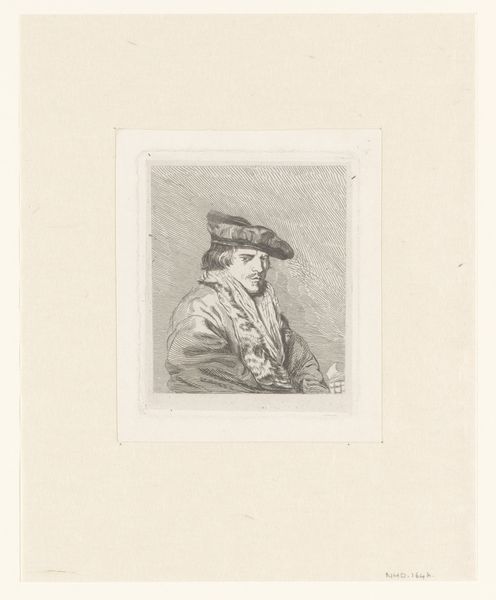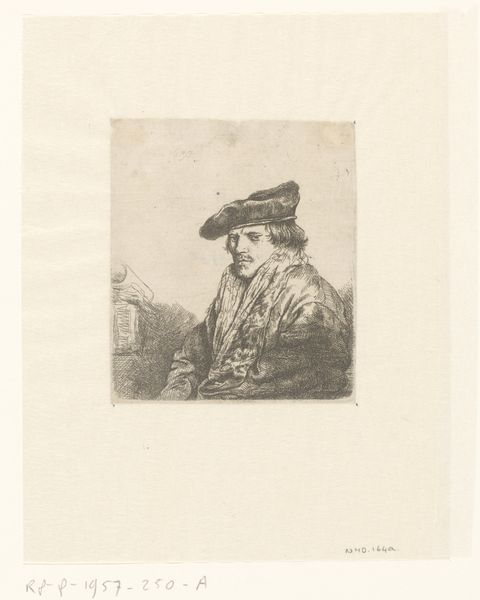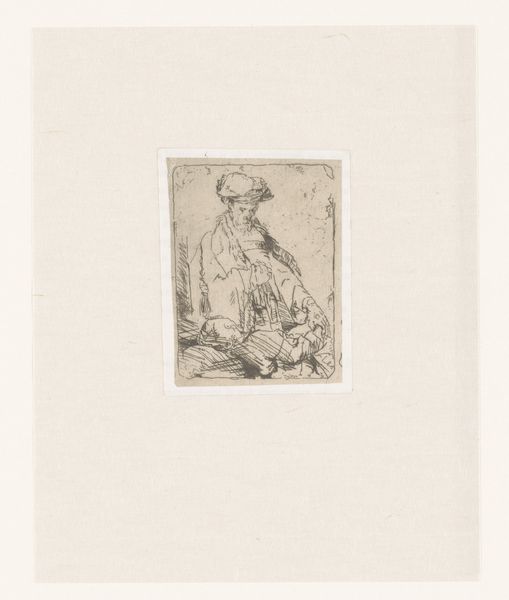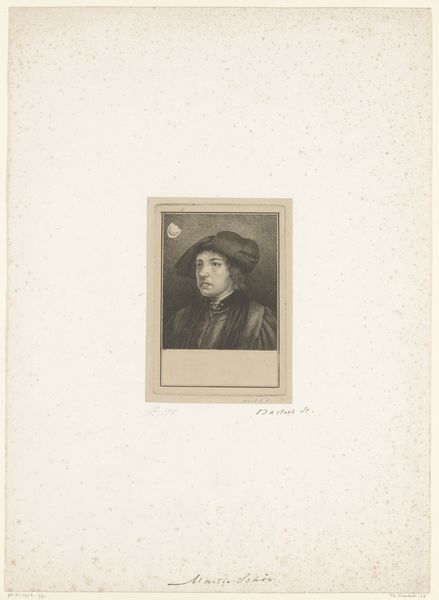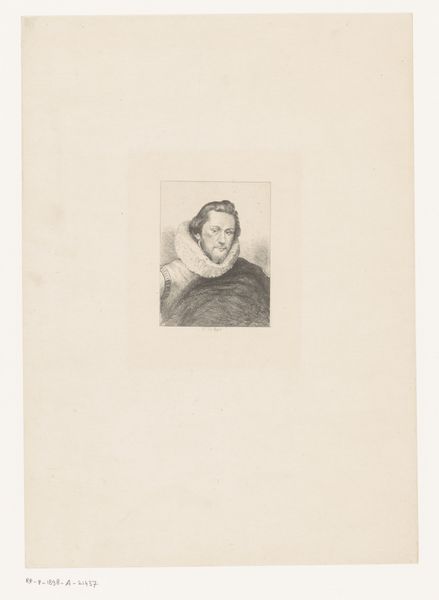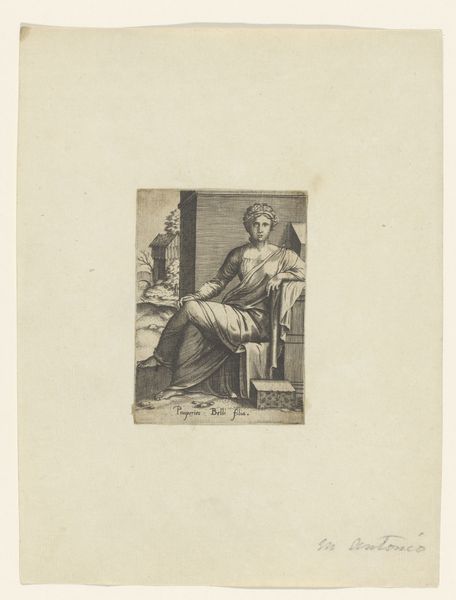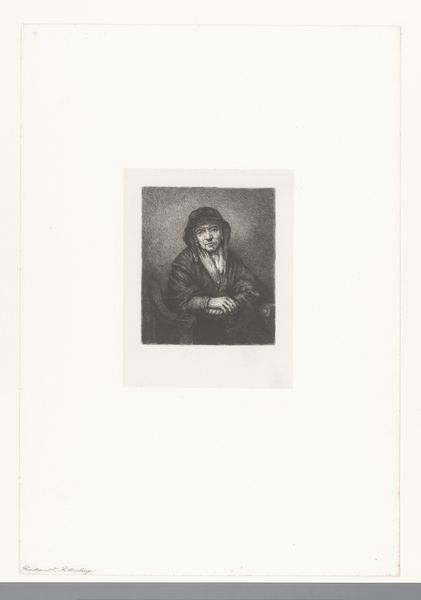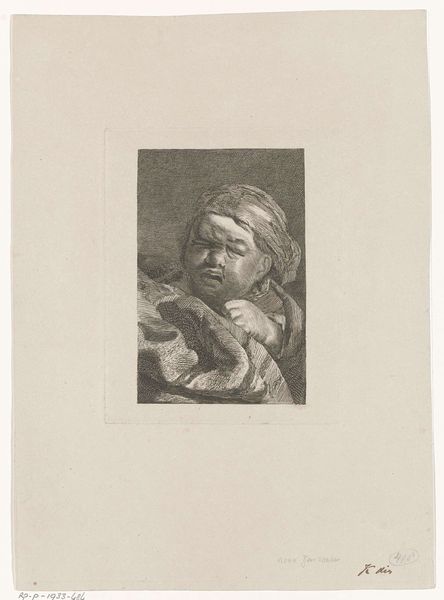
Dimensions: height 140 mm, width 145 mm
Copyright: Rijks Museum: Open Domain
Curator: Let’s consider this Baroque-style portrait print titled "Portret van Rembrandt Harmensz. van Rijn," etched and engraved by Johann Gottfried Seutter between 1727 and 1800, now housed at the Rijksmuseum. Editor: The first thing that strikes me is how contained the image is within its frame, almost as if it’s holding its breath. There is such intimacy here. Curator: Indeed, portraiture, particularly during the Baroque, played a vital role in shaping individual identity and commemorating status within society. Consider the subject's attire; it signals a very specific artistic and perhaps even economic standing. It places this figure, presumed to be Rembrandt, in the company of Europe’s elite intellectual circles. Editor: This isn’t just a literal representation of Rembrandt, though, is it? Look at the use of line, the density in certain areas contrasting with the stark emptiness elsewhere. It reads less as documentation and more like an artistic interpretation – an act of veneration through reproduction, nearly a century after Rembrandt’s death. Curator: I agree. The use of etching and engraving lends a texture and depth that a simple line drawing wouldn’t achieve. The artist invites us into a tactile and cerebral experience, effectively engaging with cultural memory through visual replication and distribution. There’s power in repeated impressions – reinforcing the artist's legacy. Editor: You know, reflecting on how this piece reproduces another artwork made me think. Think about the power of printmaking in that era—how it allowed for images and ideas to be circulated widely. A piece like this, made after Rembrandt was long deceased, really demonstrates how print helped in shaping and preserving an artist's legacy in the public sphere. Curator: That is certainly an insightful point about the distribution and reinforcement of imagery. Prints, through their multiple existences, make sure visual ideas not only survive but also thrive through wider viewership. This portrait then serves as a bridge connecting the 17th and 18th centuries through a mutual recognition of Rembrandt’s genius. Editor: Well, it is impressive how a small-scale print manages to be so evocative, both a nod to a revered figure and a testament to the enduring influence of artistic reproduction and circulation. Curator: Precisely. It has been so valuable to discuss this intimate work with you, looking through the perspectives of symbolic legacy, history and socio-cultural circulation.
Comments
No comments
Be the first to comment and join the conversation on the ultimate creative platform.
